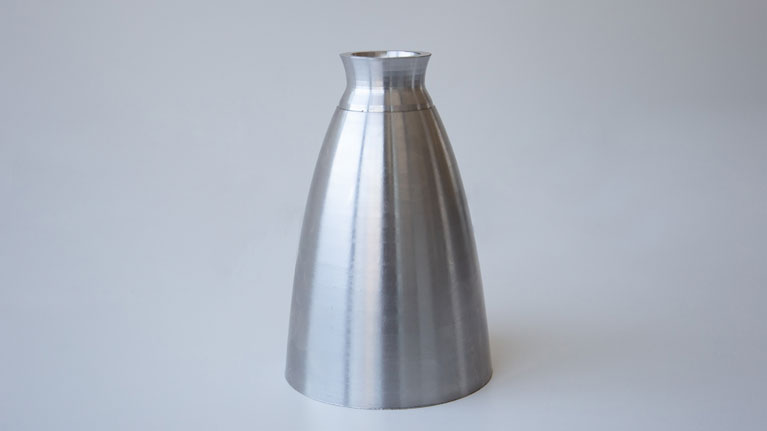Parts and components that demonstrate the resilience of new additive manufacturing technologies
During BIEMH, Tekniker will display several large parts and components with different geometries together with an extensive range of metal alloys deposited by direct energy laser technology.

Manufacturing processes for metal components using a 3D printing technique featuring direct wire deposition have revolutionised production processes for very large parts with relatively complex geometries in sectors such as aeronautics, aerospace, wind power and shipbuilding where high levels of accuracy are required.
High process efficiency, improvements related to structural quality, flexibility and freedom of movement of the system itself plus reduced raw material costs have awakened the industry’s interest in this additive manufacturing technique.
It is in this context that the Tekniker technology centre, a member of the Basque Research and Technology Alliance (BRTA), will showcase its advanced technical capabilities at the upcoming International Machine Tool Biennial (BIEMH) by presenting large parts and components with complex geometries such as, for instance, propellers or spheres manufactured under different atmospheric conditions.
One of these components is a critical element installed on space engines that Tekniker is currently manufacturing with the DED additive technique (Direct Energy Deposition) within the framework of the HIPERION II project funded by the Basque Government’s Elkartek programme whose main challenge consists in applying R&D to boost the space race.
The end result will be a 650 mm tall component with a maximum diameter of 450 mm that is currently being manufactured under simulated atmospheric conditions of planet Mars (95% of CO2 and 6 mbar of average atmospheric pressure) with a nickel superalloy that can not only withstand operating temperatures in excess of 2,000 ºC but also expansion forces that usually appear in parts of this kind.
Carlos Soriano, a Tekniker researcher, explains that thanks to the DED laser technique our organisation can repair metallic components and recover or even improve the characteristics of the original base material and generate corrosion and wear resistant coatings and also produce 3D structures or parts”.
In-house equipment and technology
Tekniker also possesses in-house technology: the TITAN machine, a very large 3D printer fully designed and developed by the technology centre that is used to manufacture large metal structures measuring up to 1900 x 800 x 750 mm by applying the DED laser metal wire deposition technique.
The equipment has been specifically designed to use different metal alloys (titanium, nickel, iron, aluminium etc.) under normal pressure and temperature conditions, in inert and vacuum atmospheres to manufacture high quality structures.
Compared to other additive manufacturing technologies, TITAN’s technology generates less thermal stresses during the process. Consequently, this also means that there is less distortion and deformations in the material itself and this ensures the structural integrity of all the components involved in the manufacturing process.
The machine will be presented at the upcoming BIEMH 2024 trade fair by Tekniker to demonstrate the unit’s capabilities in terms of mechanical design, aesthetics, electrical features, software and how it is able to meet requirements with regard to manufacturing, assembling and commissioning units such as TITAN and cover all the stages associated with areas such as advanced manufacturing, vacuum and metrology.
The machine also features several control and monitoring systems that ensure high levels of accuracy when parts are being manufactured and deliver traceability throughout the entire production process.
Soriano also underscores that “the flexibility associated with using laser technology and the availability of advanced monitoring and control devices allows you to manufacture structures and components made of materials that are difficult to manage like aluminium, for instance, when laser technology is used”.
In short, this equipment will allow the technology centre to offer solutions aimed at different industrial sectors so they can set up manufacturing processes focused on certain materials and geometries. Moreover, it will be possible to use additive manufacturing to produce large metal parts, to develop monitoring devices, inspection and control technologies as well as overlay and recovery services.
